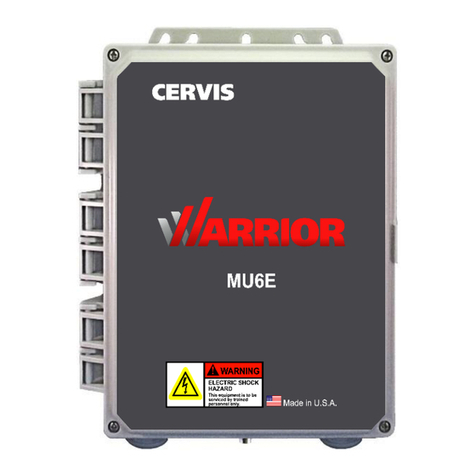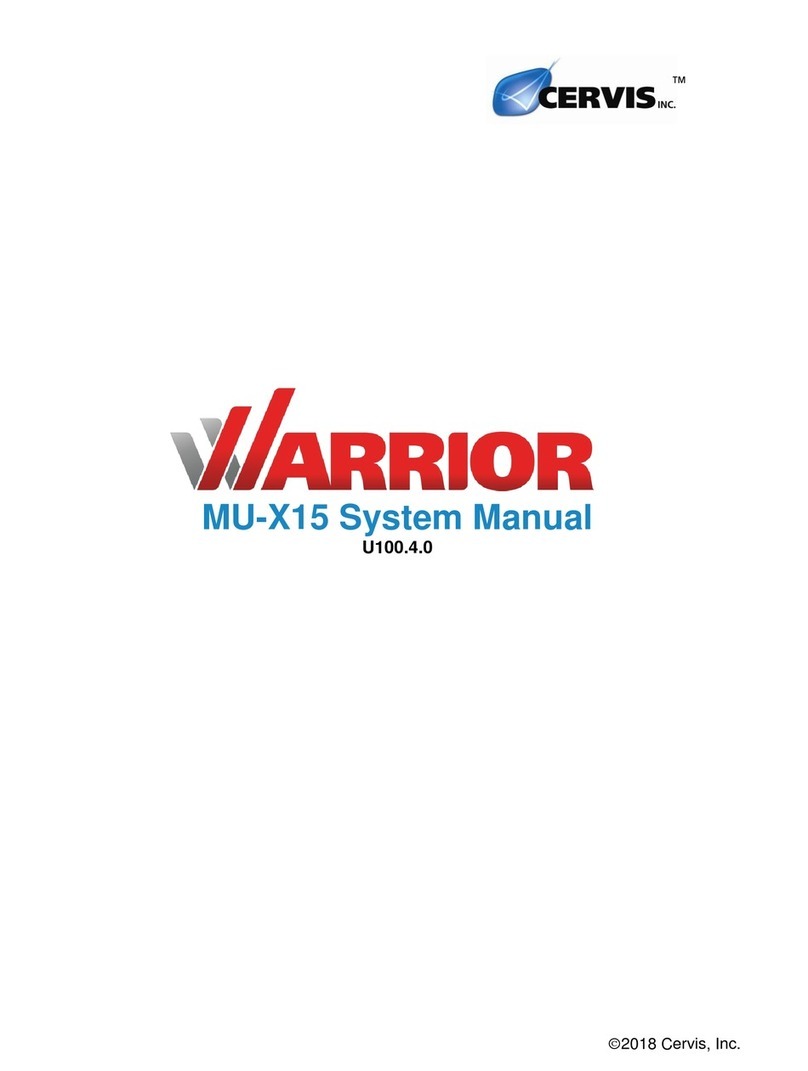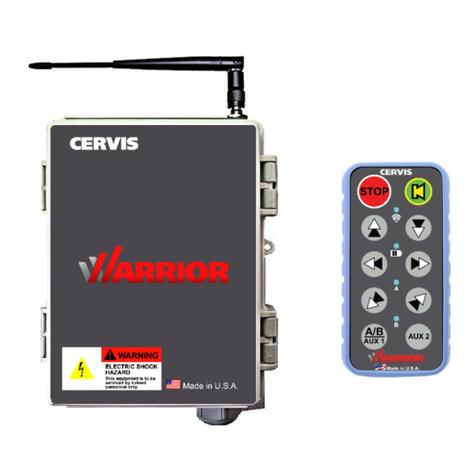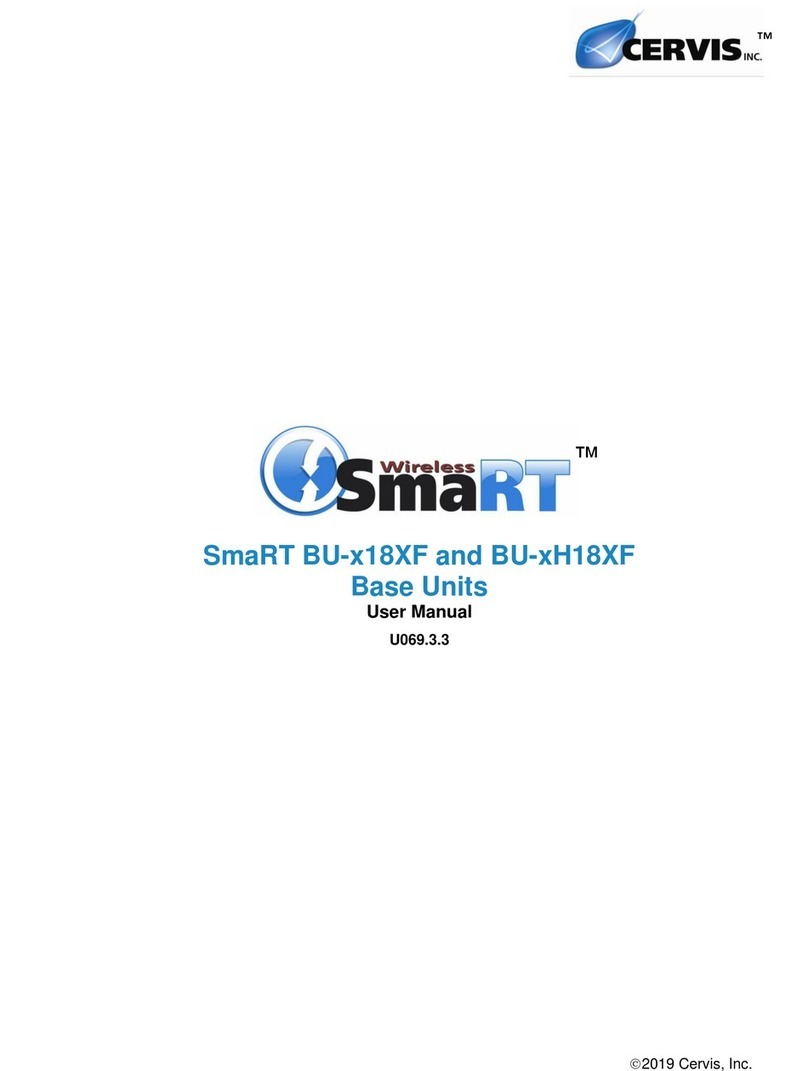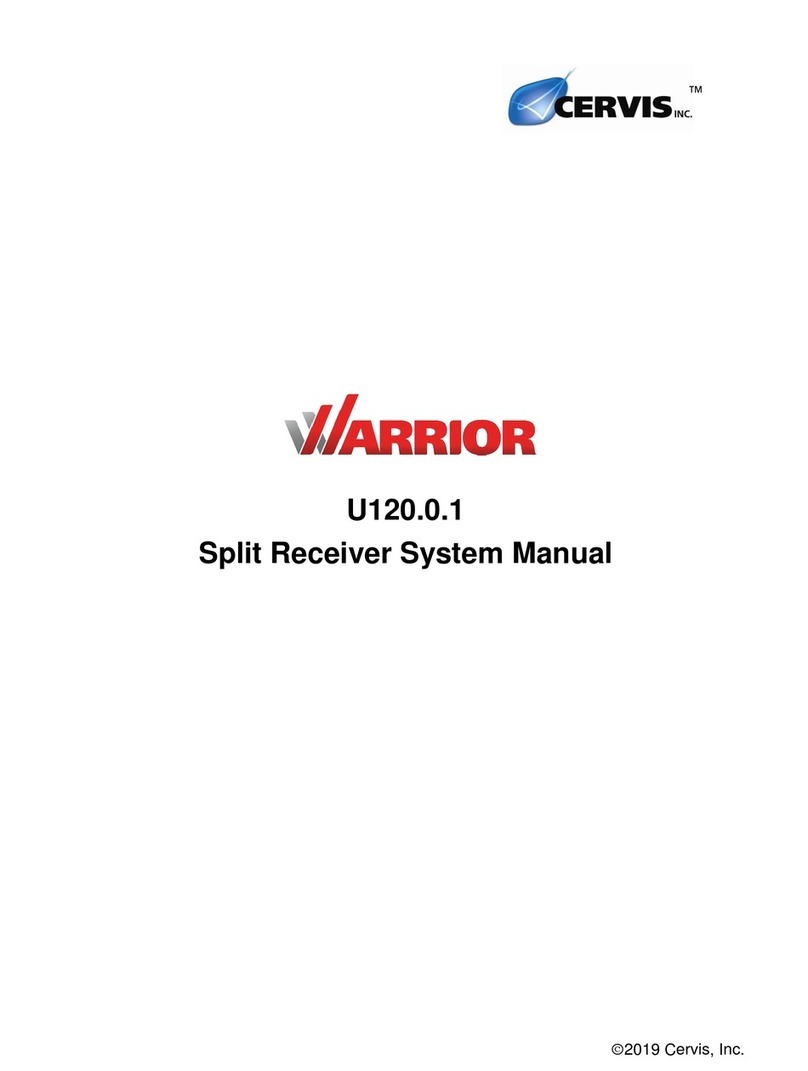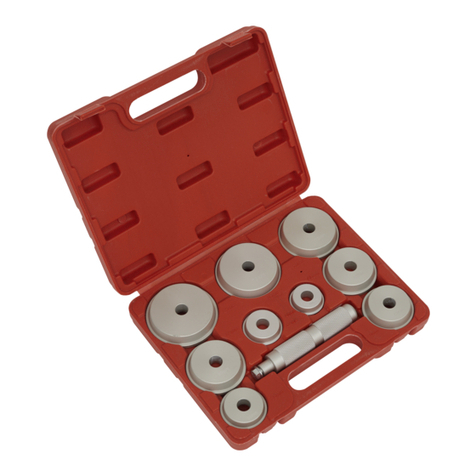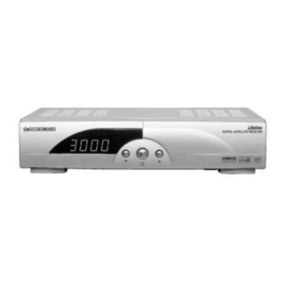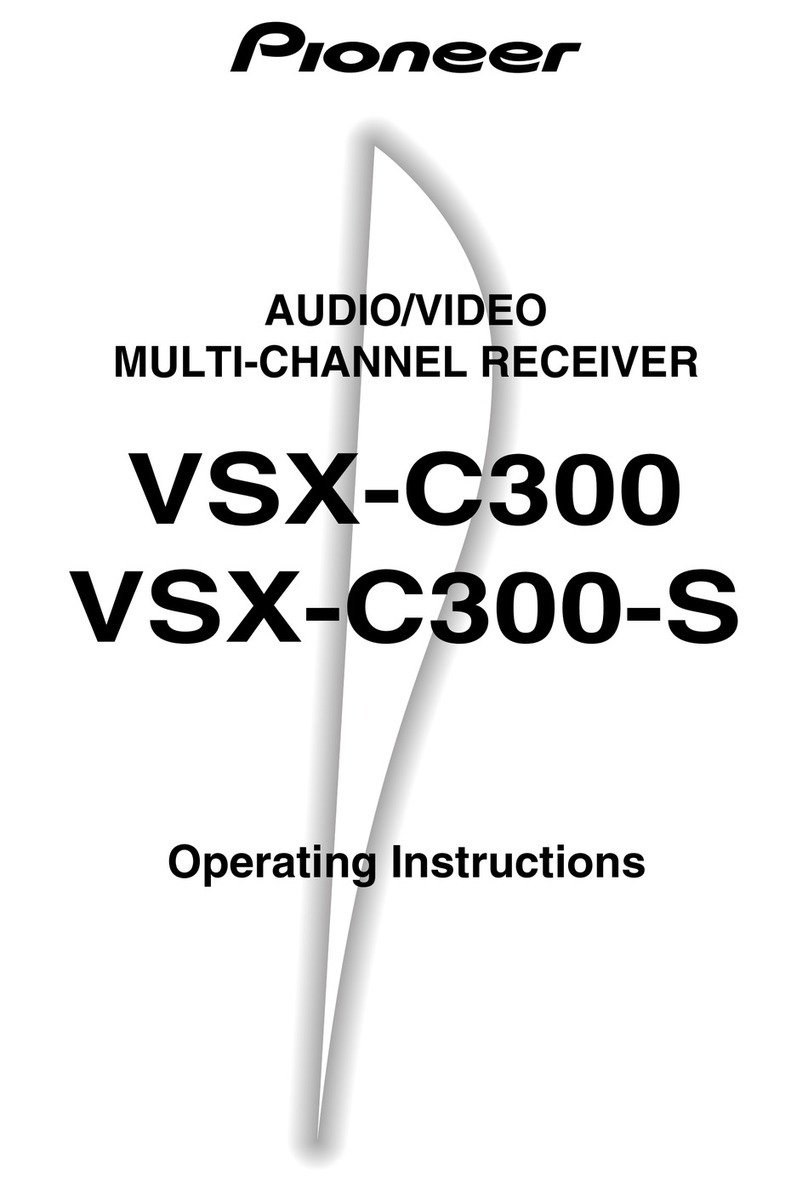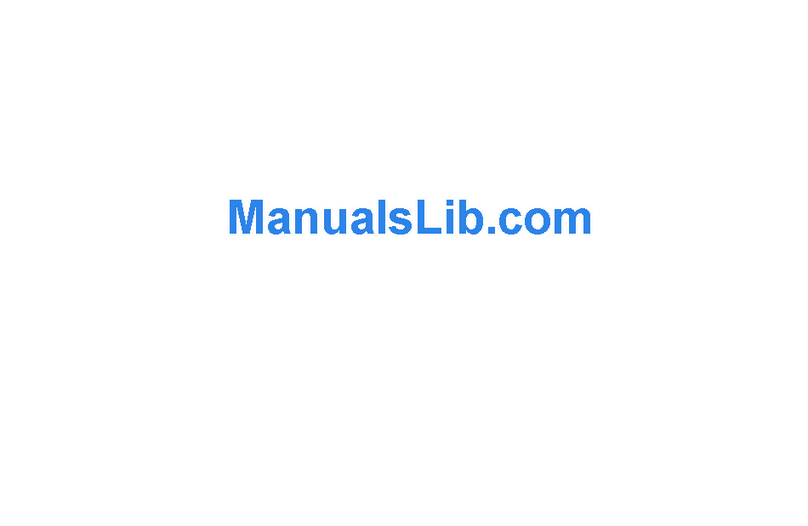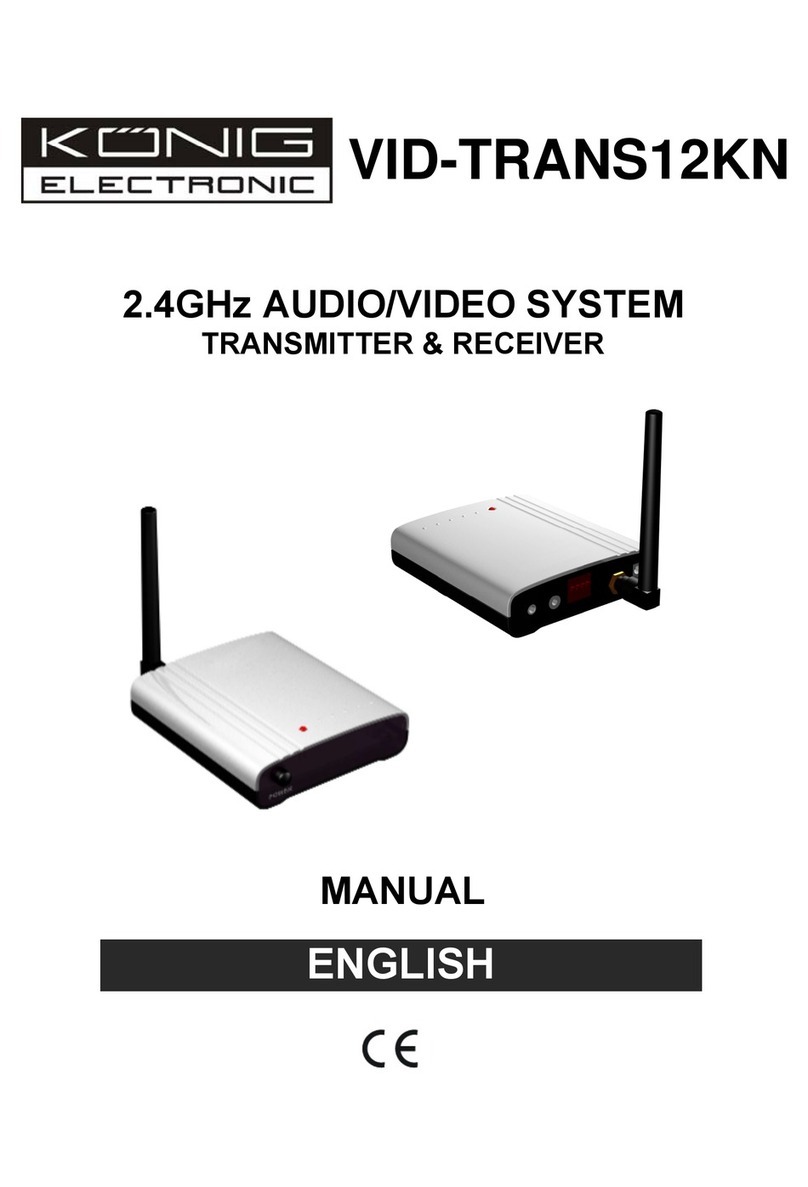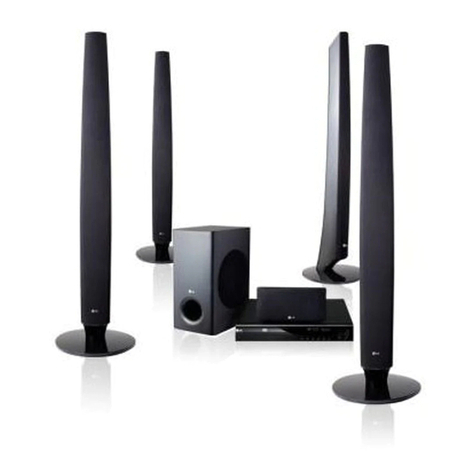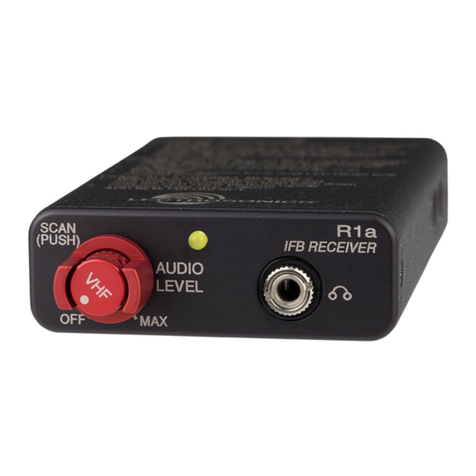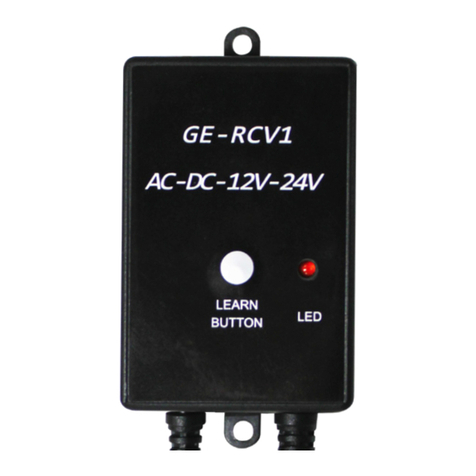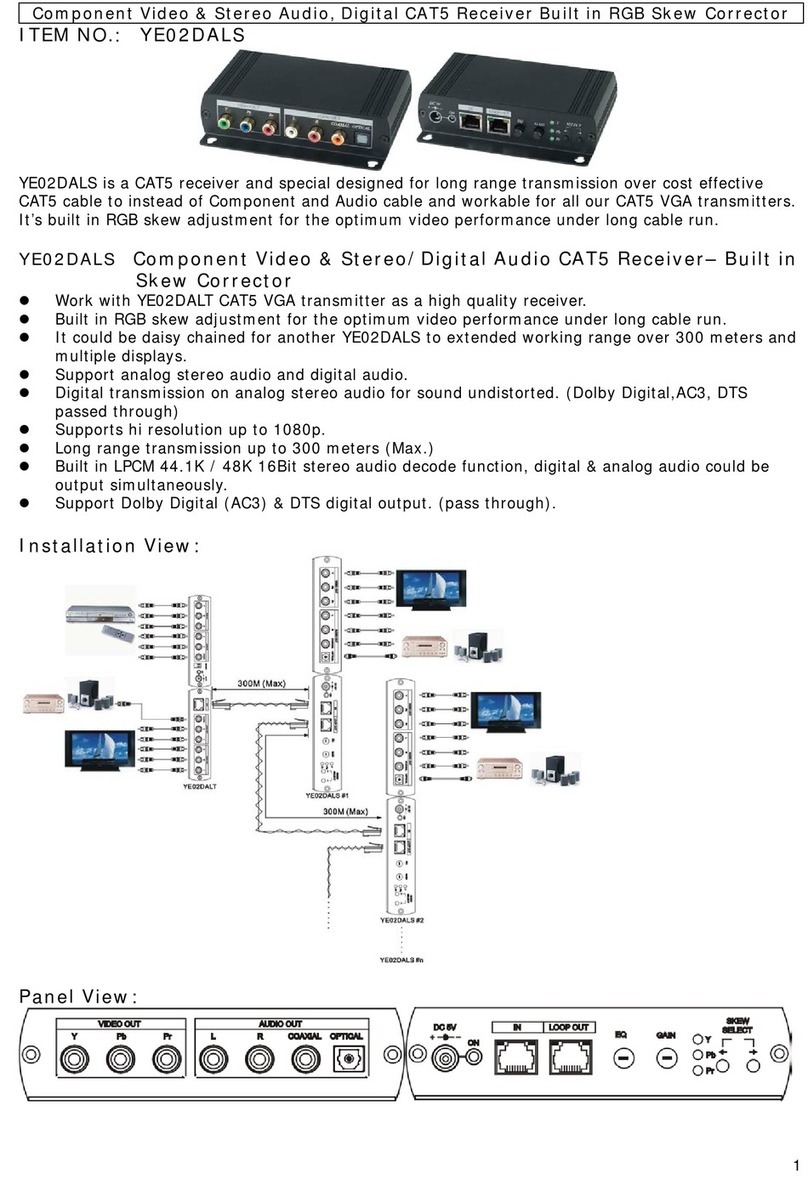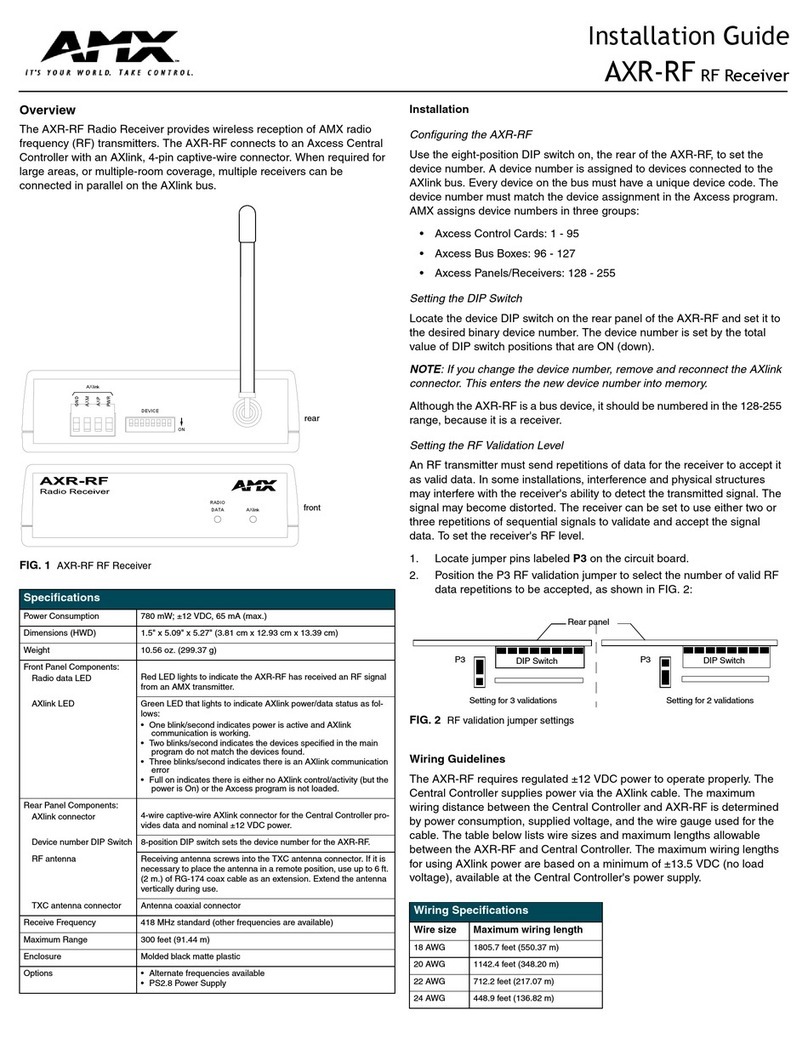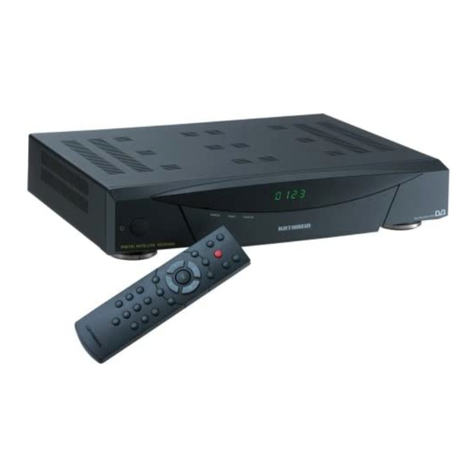Cervis Warrior DIN-9XWxR-MOD User manual

©2019 Cervis, Inc.
DIN-9XWxR-MOD Receiver Manual
U123.0.0

DIN-9XWxR-MOD
This document is the property of Cervis, Inc. and cannot be copied, modified, e-mailed, or reproduced without the express
prior written consent of Cervis, Inc.
Cervis, Inc. reserves the right to change this manual or edit, delete, or modify any information without prior notification.
FCC Statements
15.19 –Two Part Warning
This device complies with Part 15 of the FCC rules. Operation is subject to the following two conditions:
(1) This device may not cause harmful interference and
(2) This device must accept any interference received, including interference that may cause undesired operation.
15.21 –Unauthorized Modification
NOTICE: The manufacturer is not responsible for any unauthorized modifications to this equipment made by the user. Such modifications could
void the user’s authority to operate the equipment.
15.105(b) –Note:
This equipment has been tested and found to comply with the limits for a Class B digital device, pursuant to Part 15 of the FCC Rules. These
limits are designed to provide reasonable protection against harmful interference in a residential installation. This equipment generates, uses and
can radiate radio frequency energy and, if not installed and used in accordance with the instructions, may cause harmful interference to radio
communications. However, there is no guarantee that interference will not occur in a particular installation. If this equipment does cause harmful
interference to radio or television reception, which can be determined by turning the equipment off and on, the user is encouraged to try to
correct the interference by one or more of the following measures:
•Reorient or relocate the receiving antenna.
•Increase the separation between the equipment and receiver.
•Connect the equipment into an outlet on a circuit different from that to which the receiver is connected.
Industry Canada Statement
This device complies with Canadian RSS-210.
The installer of this radio equipment must ensure that the antenna is located or pointed such that it does not emit RF field in excess of Health Canada limits
for the general population; consult Safety Code 6, obtainable from Health Canada’s website https://www.canada.ca/en/health-
canada/services/environmental-workplace-health/reports-publications/radiation/safety-code-6-health-canada-radiofrequency-exposure-guidelines-
environmental-workplace-health-health-canada.html.
Le appareil est conforme à la norme CNR-210 d'Industrie Canada.
Le programme d’installation de cet équipement radio doit s’assurer que l’antenne est située ou fait telle qu’elle n’émet pas de champ RF dépassant les
limites de Santé Canada pour la population générale ; consulter le Code de sécurité 6, disponible auprès de Santé Canada site Web
https://www.canada.ca/en/health-canada/services/environmental-workplace-health/reports-publications/radiation/safety-code-6-health-canada-
radiofrequency-exposure-guidelines-environmental-workplace-health-health-canada.html.
Industry Canada Statement
This device complies with Industry Canada licence-exempt RSS standard(s). Operation is subject to the following two conditions: (1) this device may not
cause interference, and (2) this device must accept any interference, including interference that may cause undesired operation of the device.
Le présent appareil est conforme aux CNR d'Industrie Canada applicables aux appareils radio exempts de licence. L'exploitation est autorisée aux deux
conditions suivantes : (1) l'appareil ne doit pas produire de brouillage, et (2) l'utilisateur de l'appareil doit accepter tout brouillage radioélectrique subi, même
si le brouillage est susceptible d'en compromettre le fonctionnement.
IC Unlicensed Devices EIRP Statements for Removable Antennas
Part 1: Under Industry Canada regulations, this radio transmitter may only operate using an antenna of a type and maximum (or lesser) gain
approved for the transmitter by Industry Canada. To reduce potential radio interference to other users, the antenna type and its gain should be so
chosen that the equivalent isotropically radiated power (EIRP) is not more than that necessary for successful communication.
Conformément à la réglementation d'Industrie Canada, le présent émetteur radio peut fonctionner avec une antenne d'un type et d'un gain maximal (ou
inférieur) approuvé pour l'émetteur par Industrie Canada. Dans le but de réduire les risques de brouillage radioélectrique à l'intention des autres utilisateurs,
il faut choisir le type d'antenne et son gain de sorte que la puissance isotrope rayonnée équivalente (p.i.r.e.) ne dépasse pas l'intensité nécessaire à
l'établissement d'une communication satisfaisante.
Part 2: This radio transmitter (LOBSRF-310) has been approved by Industry Canada to operate with the antenna type listed below with the
maximum permissible gain and required antenna impedance for each antenna type indicated. Antenna types not included in this list, having a
gain greater than the maximum gain indicated for that type, are strictly prohibited for use with this device.
Le présent émetteur radio (LOBSRF-310) a été approuvé par Industrie Canada pour fonctionner avec les types d'antenne énumérés ci-dessous et ayant un
gain admissible maximal et l'impédance requise pour chaque type d'antenne. Les types d'antenne non inclus dans cette liste, ou dont le gain est supérieur
au gain maximal indiqué, sont strictement interdits pour l'exploitation de l'émetteur.

User Manual
©2019 Cervis, Inc.
i
Table of Contents
Table of Contents.......................................................................................................................... i
List of Figures .............................................................................................................................. ii
List of Tables................................................................................................................................ ii
Cervis, Inc. Safety Precautions .................................................................................................. 1
1.0 Warrior DIN-9XWxR-MOD Receiver.................................................................................... 2
2.0 DIN-9XWxR-MOD Receiver Mounting ................................................................................ 3
3.0 DIN-9XWxR-MOD Receiver Wiring ..................................................................................... 4
4.0 DIN-9XWxR-MOD Receiver Diagnostic LEDs and DIP Switches..................................... 5
4.1 LEDs................................................................................................................................... 5
4.2 DIP Switches ..................................................................................................................... 6
5.0 Associate with DIN-9XWxR-MOD ....................................................................................... 7
6.0 DIN-9XWxR-MOD Receiver Antenna.................................................................................. 8
7.0 Warrior DIN-9XWxR-MOD Receiver Specifications .......................................................... 9
Appendix A: Exposure to Radio Frequency Energy .............................................................. 10
Appendix B: RF Exposure Considerations ............................................................................. 10

DIN-9XWxR-MOD
U123.0.0
ii
List of Figures
Figure 1. Warrior DIN-9XWxR-MOD Receiver and 900MHz External Antenna..........................2
Figure 2. DIN-9XWxR-MOD Receiver Mounting...........................................................................3
Figure 3. DIN-9XWxR-MOD Receiver Terminal Standard Wiring ...............................................4
Figure 4. DIN-9XWxR-MOD LEDs..................................................................................................5
Figure 5. DIN-9XWxR-MOD DIP Switches.....................................................................................6
Figure 6. DIN-9XWxR-MOD 900MHz External Antenna...............................................................8
List of Tables
Table 1. Available DIN-9XWxR-MOD Models................................................................................2
Table 2. DIN-9XWxR-MOD Diagnostic LEDs ................................................................................5
Table 3. DIN-9XWxR-MOD DIP Switches ......................................................................................6
Table 4. DIN-9XWxR-MOD Receiver Specifications ....................................................................9

User Manual
©2019 Cervis, Inc.
1
Cervis, Inc. Safety Precautions
✓Read and follow all instructions.
✓Failure to abide by Safety Precautions may result in equipment failure, loss of
authority to operate the equipment, and personal injury.
✓Use and maintain proper wiring. Follow equipment manufacturer instructions.
Improper, loose, and frayed wiring can cause system failure, equipment damage, and
intermittent operation.
✓Changes or modifications made to equipment not expressly approved by the
manufacturer will void the warranty.
✓Equipment owner/operators must abide by all applicable Federal, State, and Local
laws concerning equipment installation and operation. Failure to comply could result
in penalties and could void user authority to operate the equipment.
✓Make sure that the machinery and surrounding area is clear before operating. Do not
activate the remote control system until certain that it is safe to do so.
✓Turn off the handheld remote transmitter and disconnect power from the receiver
before attempting any maintenance. This will prevent accidental operation of the
controlled machinery.
✓Use a damp cloth to keep units clean. Remove mud, concrete, dirt, etc. after use to
prevent obstructing or clogging the buttons, levers, wiring, and switches.
✓Do not allow liquid to enter the handheld transmitter or receiver enclosures. Do not
use high-pressure equipment to clean the handheld remote transmitter or receiver.
Water can damage the internal circuitry.
✓Disconnect the radio receiver before welding on the machine. Failure to disconnect
the receiver unit may result in destruction of or damage to the receiver.
✓Operate and store units only within the specified operation and storage temperatures
defined in this document’s specifications.
✓Keep high-energy radio frequency (RF) devices away from handheld remotes.
Activating high-power communication radios, for instance, in close proximity to
handheld remotes can cause interference and “false” circuit activation.
✓Do not key two-way radios while using the handheld remote transmitter.

DIN-9XWxR-MOD
U123.0.0
2
1.0 Warrior DIN-9XWxR-MOD Receiver
The Warrior DIN-9XWxR-MOD is a low cost, DIN-rail-mounted wireless receiver designed to
transmit operational commands to programmable logic controllers (PLCs) mounted on
machinery. It runs an application that allows users to access specific registers to process
transmitter/system information. This allows system integrators to freely develop PLC application
software.
The bi-directional radio is available in FCC/IC license-free 900 MHz for maximum flexibility. The
DIN-9XWxR-MOD accepts control commands from the complete line of Warrior handheld
transmitters as part of a system.
Figure 1. Warrior DIN-9XWxR-MOD Receiver and 900MHz External Antenna
Warrior DIN-9XWxR-MOD Features
RS-485/RS-422 MODBUS Interface
Compact; Designed to IP40 Standards
900 MHz or 450 MHz @ 100 mW; No License Required for Operation
Designed to ICS 8 NEMA Crane Specification
External Antenna
Mountable to 35-mm DIN Rails
Table 1. Available DIN-9XWxR-MOD Models
Model Number
Part Number
Number of Relays
DIN-9XW0R-MOD
19005501
None
DIN-9XW1R-MOD
19005502
Single

User Manual
©2019 Cervis, Inc.
3
2.0 DIN-9XWxR-MOD Receiver Mounting
The DIN-9XWxR-MOD can be mounted to 35-mm DIN rails using the connector that attaches to
the module’s end caps. Figure 2 illustrates the mounting bracket (circled) and the end caps
(arrows).
Figure 2. DIN-9XWxR-MOD Receiver Mounting

DIN-9XWxR-MOD
U123.0.0
4
3.0 DIN-9XWxR-MOD Receiver Wiring
Figure 3 illustrates which of the bundled wiring harness wires connect to particular screw
terminals.
Note: Flying leads that are not connected on the job site either must be insulated at the wire
end or the wire must be disconnected from the appropriate terminal.
Figure 3. DIN-9XWxR-MOD Receiver Terminal Standard Wiring
RS-485/RS-422
RX+ RX–GND
V+ V–GND K_COM K_NO TX+ N/A TX–

User Manual
©2019 Cervis, Inc.
5
4.0 DIN-9XWxR-MOD Receiver Diagnostic LEDs and DIP
Switches
4.1 LEDs
The DIN-9XWxR-MOD receiver has four board-mounted system status LEDs that can be used
as diagnostics tools to verify operation. Removing the DIN-9XWxR-MOD faceplate allows
access to the LEDs. These LEDs (shown in Figure 4) are LED 1=Health; LED 2=TX; LED 3=RX
and LED 4=Association. See Table 2.
Figure 4. DIN-9XWxR-MOD LEDs
Table 2. DIN-9XWxR-MOD Diagnostic LEDs
LED
Name
LED State
Description
1
Health
Blinking
Unit OK, normal processor operation
2
TX
(Transmit)
Flashing
Indicates radio frequency (RF) messages sent to handheld
remote transmitter
3
RX
(Receive)
Flashing
Indicates RF messages received from handheld
4
Association
Blinking
Used during association with a Warrior transmitter

DIN-9XWxR-MOD
U123.0.0
6
4.2 DIP Switches
The Warrior DIN-9XWxR-MOD features four DIP switches to control the module’s functions.
Table 3 lists each switch’s functionality.
Figure 5. DIN-9XWxR-MOD DIP Switches
Table 3. DIN-9XWxR-MOD DIP Switches
Switch
Function
Description
1
Power
On (Left) –Relay controlled by master device
Off (Right) –Relay closed when link established
2
N/A
Undefined
3
N/A
Undefined
4
Association
On (Left) –Association enabled
Off (Right) –Association disabled

User Manual
©2019 Cervis, Inc.
7
5.0 Associate with DIN-9XWxR-MOD
The Associate process is used when necessary to establish or re-establish the communication
link with the DIN-9XWxR-MOD receiver. The association process varies depending on the type
of Warrior remote control device you have. Consult your specific remote’s user manual for its
association process.
Note: DIN-9XWxR-MOD association can only occur during the first two minutes following unit
power-up. If you exceed this two-minute window of opportunity before attempting to Associate
with the handheld transmitter, the attempt will be rejected, and the DIN-9XWxR-MOD must be
powered off and then turned on again, allowing for the two-minute window to reactivate.
Note: A receiver that is in use with another handheld transmitter cannot be associated.
1. Turn the DIN-9XWxR-MOD on by flipping DIP switch 1 (Power) to the ON position (Left).
2. Put the DIN-9XWxR-MOD into association mode by flipping DIP switch 4 (Association)
to the ON position (Left).
The ASC LED flashes, indicating that the module is in Association mode.
3. Follow your specific remote’s association steps.
4. Association is successful when all four LEDs on the DIN-9XWxR-MOD flash.

DIN-9XWxR-MOD
U123.0.0
8
6.0 DIN-9XWxR-MOD Receiver Antenna
The DIN-9XWxR-MOD comes with a 915 MHz right angle external antenna (BB3-08) that
attaches to the receiver via its built-in 902–928 MHz RP-SMA connector mount.
Figure 6. DIN-9XWxR-MOD 900MHz External Antenna
Caution!
RF interference may cause poor performance.
1.96" (50 mm)
RP-SMA
(Not to Scale)
0.65" (16.5 mm)
0.43" (11 mm)

User Manual
©2019 Cervis, Inc.
9
7.0 Warrior DIN-9XWxR-MOD Receiver Specifications
Table 4. DIN-9XWxR-MOD Receiver Specifications
Item
Description
Power
Vin 9 to 36 VDC
Environment
Operating Temp –13 °F to 158 °F (–25 °C to 70 °C)
Storage Temp –40 °F to 176 °F (–40 °C to 80 °C)
Humidity 0–95% non-condensing
Radio
Frequency 906–924 MHz @ 100mW
License None required, license-free
Modulation Channel-Hopping Direct Sequence Spread
Spectrum (CH DSSS)
Antenna External (RP-SMA)
Enclosure
Material Aluminum
Faceplate Stainless Steel
End Caps Polyamide
DIN Rail size 35 mm
Dimensions Inches: 2.96 x 2.81 x 1.25
mm: 75.06 x 71.48 x 31.75
Weight 0.5 lb. (
Indicators (Red)
HLTH Health –Blinks 1x/sec when OK
TX Transmit –Flashing when transmitting
RX Receive –Flashing when receiving
ASC Association –Used during association
DIP Switches
1 On/Left –Relay controlled by master device
Off/Right –Relay closed when link established
2 Undefined
3 Undefined
4 On/Left –Association Enabled
Off/Right –Association Disabled

DIN-9XWxR-MOD
U123.0.0
10
Appendix A: Exposure to Radio Frequency Energy
Warrior handheld remote transmitter units and receivers contain radio transceivers. When active,
a handheld remote sends out radio frequency (RF) energy through its internal antenna. The
Warrior handheld remote complies with limits set by the United States Federal Communications
Commission (FCC) for operating distance from human tissue.
Appendix B: RF Exposure Considerations
The radio module may be used in a variety of host applications that fall into two general
categories:
1. Mobile applications: Any operating locations that are not on a human body. In mobile
applications, the host application is typically fixed to mobile equipment, with either an
internal or external antenna.
2. Portable applications: Those where the transmitting equipment is located on the hand,
arm, or other part of the human body. In portable applications, the equipment is typically
held in the hand of an operator or affixed to either a belt or harness on the torso.
Equipment containing the radio module was evaluated for RF exposure hazards by two
approaches:
1. Maximum Permissible Exposure (MPE) for mobile applications
2. Specific Absorption Rate (SAR) for portable applications.
The required separation distances are measured from the actual location of the radiated part of
the antenna. An antenna may be inside the host application, affixed to the enclosure of the host
application, or at the end of an optional extension coaxial cable.
Mobile Applications
Equipment must be located in a location at least 20cm away from areas likely to be occupied by
an unaware person.
Handheld Applications
All operators of the handheld equipment with any type of antenna require proper equipment
operation training, and such training must include RF exposure safety instructions. Once training
is completed, they are considered to be “aware persons.”
If the portable operating pose is on the hand or arm, a 5mm separation between the radiating
part of the antenna and nearby human tissue is required.
Required Training
All installers and operators of host applications that include an SRF310 radio transceiver module
must be trained to use proper RF safety precautions.
Table of contents
Other Cervis Receiver manuals

